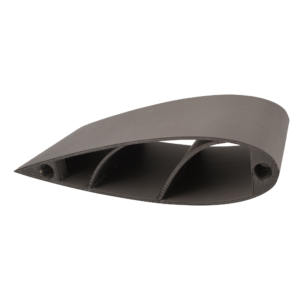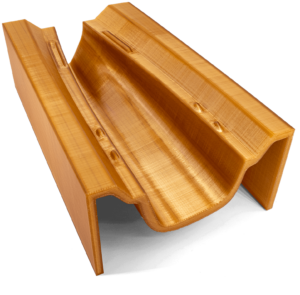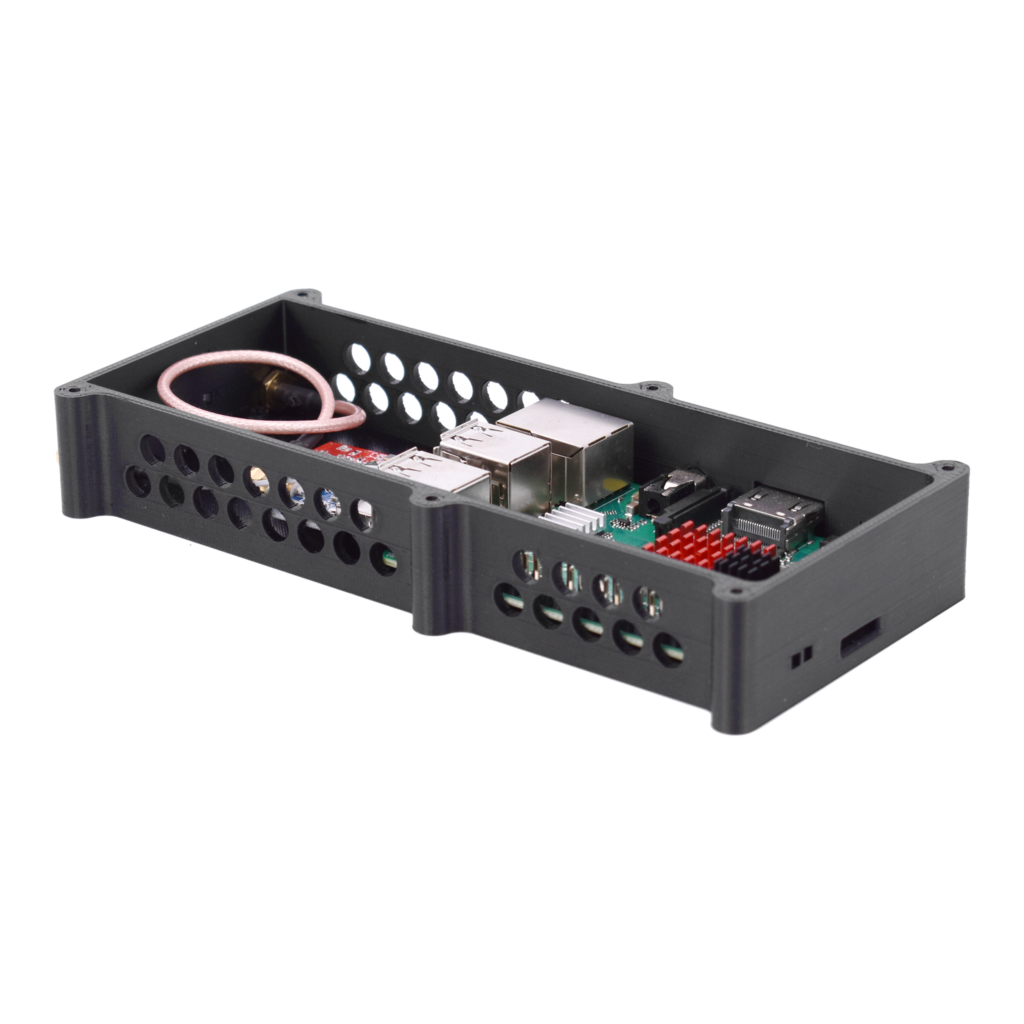
Once known solely for its high-performance filaments for material extrusion 3D printers, 3DXTECH surprised the additive manufacturing (AM) industry when it shifted gears and began making the Gearbox 3D printer. The company is now on the second generation of the machine, the Gearbox HT2, a large volume fused filament fabrication (FFF) system capable of processing high-temperature materials such as PEKK, PEEK, and ULTEM™ PEI [Download HT2 Brochure].
From Filaments to 3D Printers
Founded in 2014, 3DXTECH represents a new generation of manufacturers who are unseating Stratasys as the dominant player in the FFF space with their own 3D printers capable of manufacturing parts with such engineering-grade filaments. Unlike Stratasys, these firms are typically able to move more quickly in introducing new materials and equipment at lower costs.
- A part 3D printed with glass-fiber reinforced PEEK from 3DXTECH.
- A part 3D printed with carbon-fiber reinforced PEKK from 3DXTECH.
- A 3D printed mold made using Ultem 1010 from 3DXTECH.
Because 3DXTECH’s legacy business is in formulating thermoplastic materials, it has introduced a variety of filaments that can’t be found with Stratasys machines. However, when the company first commercialized its products, it found that the market wasn’t quite ready for what it had to offer, according to Paul Carlson, Vice President of Sales & Marketing at 3DXTECH.
“We started as a materials company specializing in bringing the broadest portfolio of advanced materials to the industry,” Carlson told 3DPrint.com. “One of the challenges that we ran into was the lack of open material systems that were able to successfully process our high-performance materials. We partnered with several printer OEM’s at the onset, but it became clear that we needed to create our own system if we were going to have the printer focused on high-performance materials in an industrial platform.”
A 3D Printer for the Largest Portfolio of Composite Filaments
For this reason, in 2018, 3DXTECH embarked on developing its own 3D printer through a separate business called Gearbox. The result was the Gearbox HT2 [Download HT2 Brochure], which runs on a Yaskawa control system for quick and accurate production. Hardened and wear-resistant parts allow the machine to 3D print abrasive materials such as carbon and glass fiber. Because 3DXTECH has what may be the largest portfolio of composite filaments on the market, the HT2 is designed to process all of them, including CarbonX™ carbon fiber and FibreX™ glass fiber composite materials.
“We have dozens of 3D printers in our shop and we’re constantly running them—everything from lower cost Makergears all the way up to Fortus 900s from Stratasys and pretty much everything in between,” Carlson said. “So, when we decided to bring a printer to market, we really looked at what we liked on each of these printers, from both the high-end industrial side to even the lower end, maker side. We worked to incorporate all of our favorite attributes and put them together in a platform that we always wanted. That’s how the Gearbox product was essentially born.”
Gearbox™ HT2 Specifications
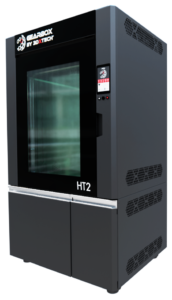 Large Build Volume (18” x 18” x 32”)
Large Build Volume (18” x 18” x 32”)- Actively Heated Build Chamber (up to 250°C)
- Dual Extruders (up to 500°C)
- Four Actively Dried Filament Storage Bays (holds 16kg of filament)
- High Speed Yaskawa Servo Control System
- Open Materials Philosophy
- Hardened Drivetrain for Carbon Fiber Materials
- Designed and Built in the USA
To take advantage of 3DXTECH’s large portfolio of high-temperature materials, the HT2 was engineered with a large actively heated build chamber (18”x18”x32”) that can reach temperatures up to 250°C and dual extruders capable of reaching up to 500°C. This enables the 3D printing of high-temperature materials like PEEK, PEKK, and ULTEM™ PEI. Another feature that is essential to printing these high-performance materials is an integrated materials handling system that features four actively dried filament bays to keep materials dry during long prints.
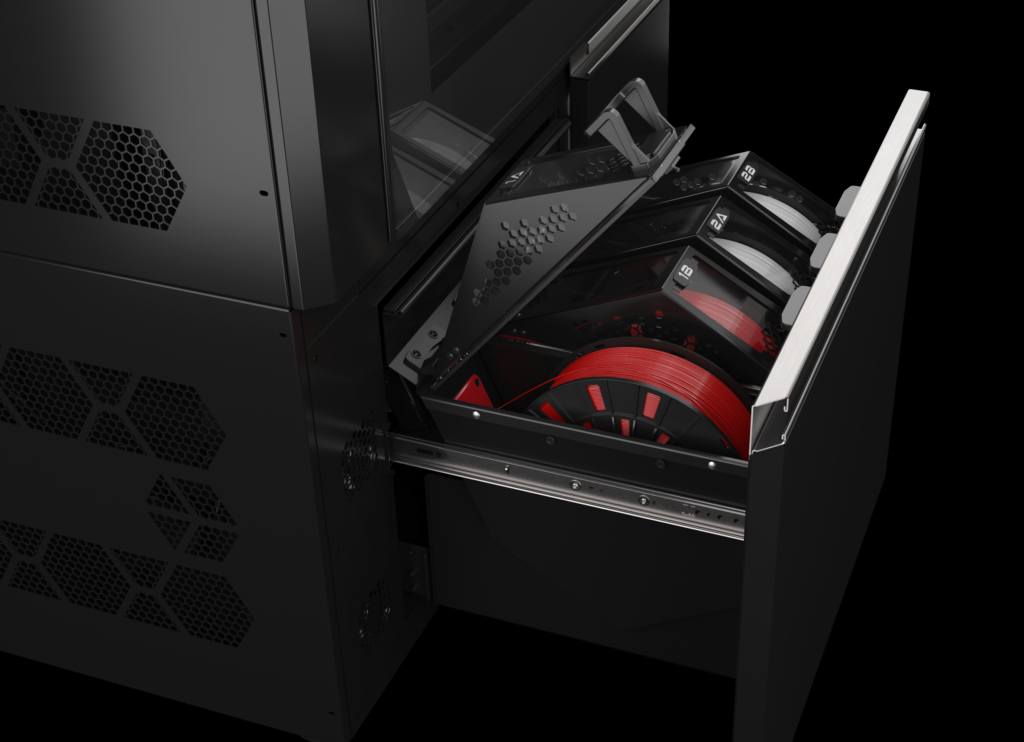
The filament bay for the Gearbox HT2 3D printer, which features a High Temp Build Chamber from 3DXTECH.
“The first material that we qualified and validated on this machine was ULTEM™ 1010. I’ve been in the business for a little over 20 years now. ULTEM™ 1010 is the most challenging FDM/FFF material that I’ve encountered. So, we set our sights on that material first to prove out our system. Once you master that material, then everything else has been a bit easier. Critical for the proper printing of Ultem™ material – both 1010 and 9085 – is a highly heated build chamber. It’s essential for part performance to have a 225°C chamber when printing Ultem™ 1010. Our print chamber can reach and maintain these elevated temperatures which allow us maximum freedom of operation. Now, we’ve grown to over 20 different validated profiles for that system ranging from ABS to Ultem and many in between.” Carlson relayed.
Other features of the HT2 include vacuum-secured build sheets for optimized layer adhesion and fast turnover between builds. The sheets can be quickly and easily removed to reduce downtime between prints. Automatic bed leveling means no manual leveling, also improving speed, accuracy, and repeatability. Additionally, the system is able to achieve print speed of up to 300 mm/s.
The Gearbox HT2 3D Printer in the Market
Given the nature of the company’s materials, it’s reasonable that the main markets for the Gearbox HT2 have been aerospace, defense, and the electronics industry. We can imagine PEEK, PEKK, and ULTEM™ serving as ideal for the 3D printing of aerospace-compliant housings, fixtures, and other elements that can withstand the rigors of tough environments. For the electronics industry, 3DXTECH offers 12 different electrostatic discharge (ESD) filaments ranging from ESD-ABS up to ESD PEEK.
It’s no surprise then that the Gearbox H2 is already picking up significant traction. Carlson explained:
“After about three years of development, we had our first installation in November 2021. That same customer came back and purchased another unit from us about four months later and they’ve been running those printers very solidly since that time with a couple of thousand parts printed. In total we have somewhere north of 30 units installed thus far in the year since launch.”
According to the Polymer Parts Produced: AM Applications Market Analysis report from SmarTech Analysis, 3D printed plastic parts are expected to generate $26 billion in revenues annually by 2030. While this segment will be represented by a number of different technologies, high-temperature filaments are thought to be a crucial area that will only expand as more machines outside of Stratasys are brought to market. The Gearbox HT2, then, signifies a coming a paradigm shift in polymer 3D printing.
To learn more about 3DXTECH and the Gearbox HT2, and to download the HT2 brochure, visit https://www.3dxtech.com/ht2-3d-printer/
Subscribe to Our Email Newsletter
Stay up-to-date on all the latest news from the 3D printing industry and receive information and offers from third party vendors.
You May Also Like
Precision at the Microscale: UK Researchers Advance Medical Devices with BMF’s 3D Printing Tech
University of Nottingham researchers are using Boston Micro Fabrication‘s (BMF) 3D printing technology to develop medical devices that improve compatibility with human tissue. Funded by a UK grant, this project...
3D Printing Webinar and Event Roundup: April 21, 2024
It’s another busy week of webinars and events, starting with Hannover Messe in Germany and continuing with Metalcasting Congress, Chinaplas, TechBlick’s Innovation Festival, and more. Stratasys continues its advanced training...
3D Printing Webinar and Event Roundup: March 17, 2024
It’s another busy week of webinars and events, including SALMED 2024 and AM Forum in Berlin. Stratasys continues its in-person training and is offering two webinars, ASTM is holding a...
3D Printed Micro Antenna is 15% Smaller and 6X Lighter
Horizon Microtechnologies has achieved success in creating a high-frequency D-Band horn antenna through micro 3D printing. However, this achievement did not rely solely on 3D printing; it involved a combination...



